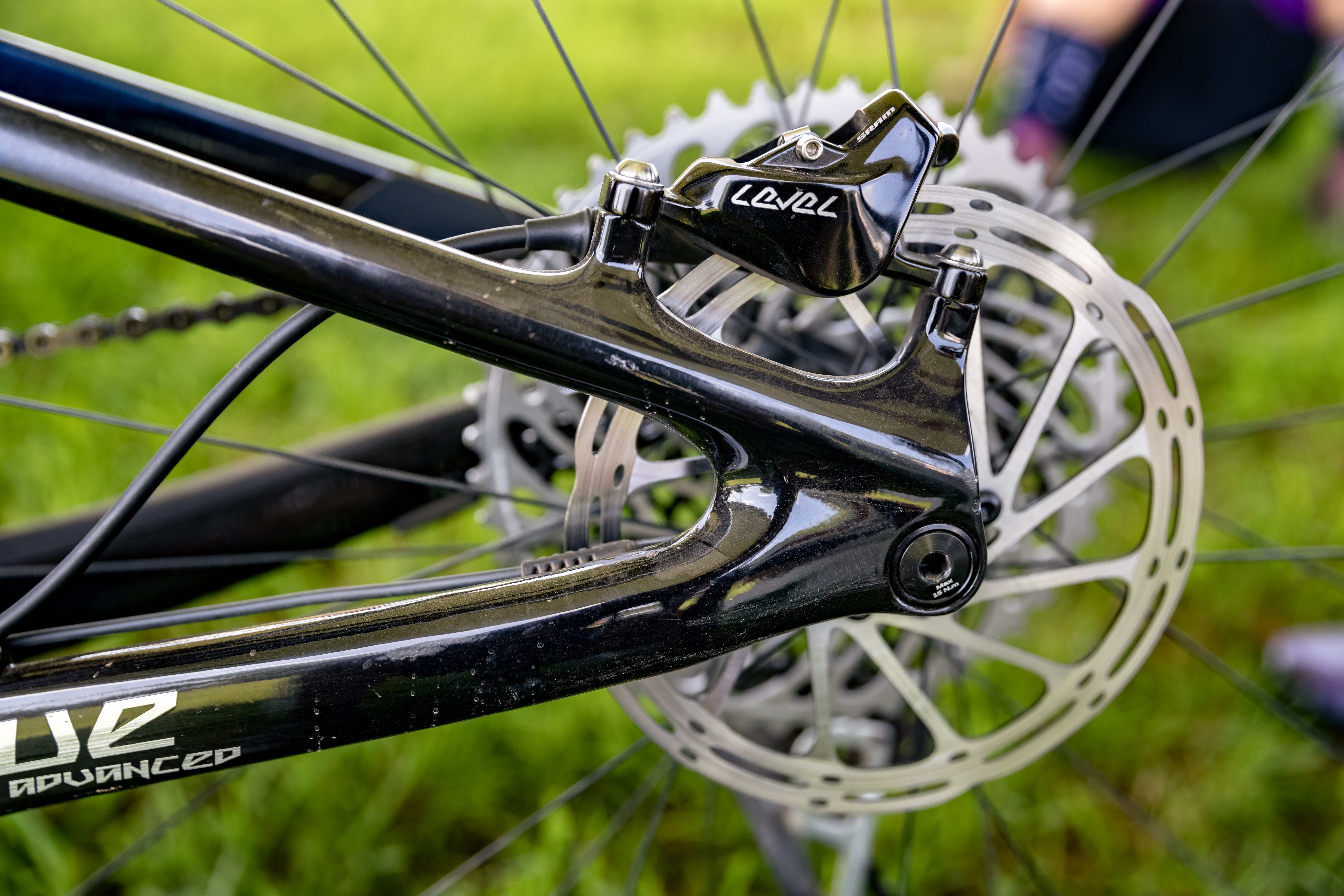New Liv Pique 29 lineup is live, complete with the Fox Live Valve
Originally posted on August 20, 2019 at 11:00 am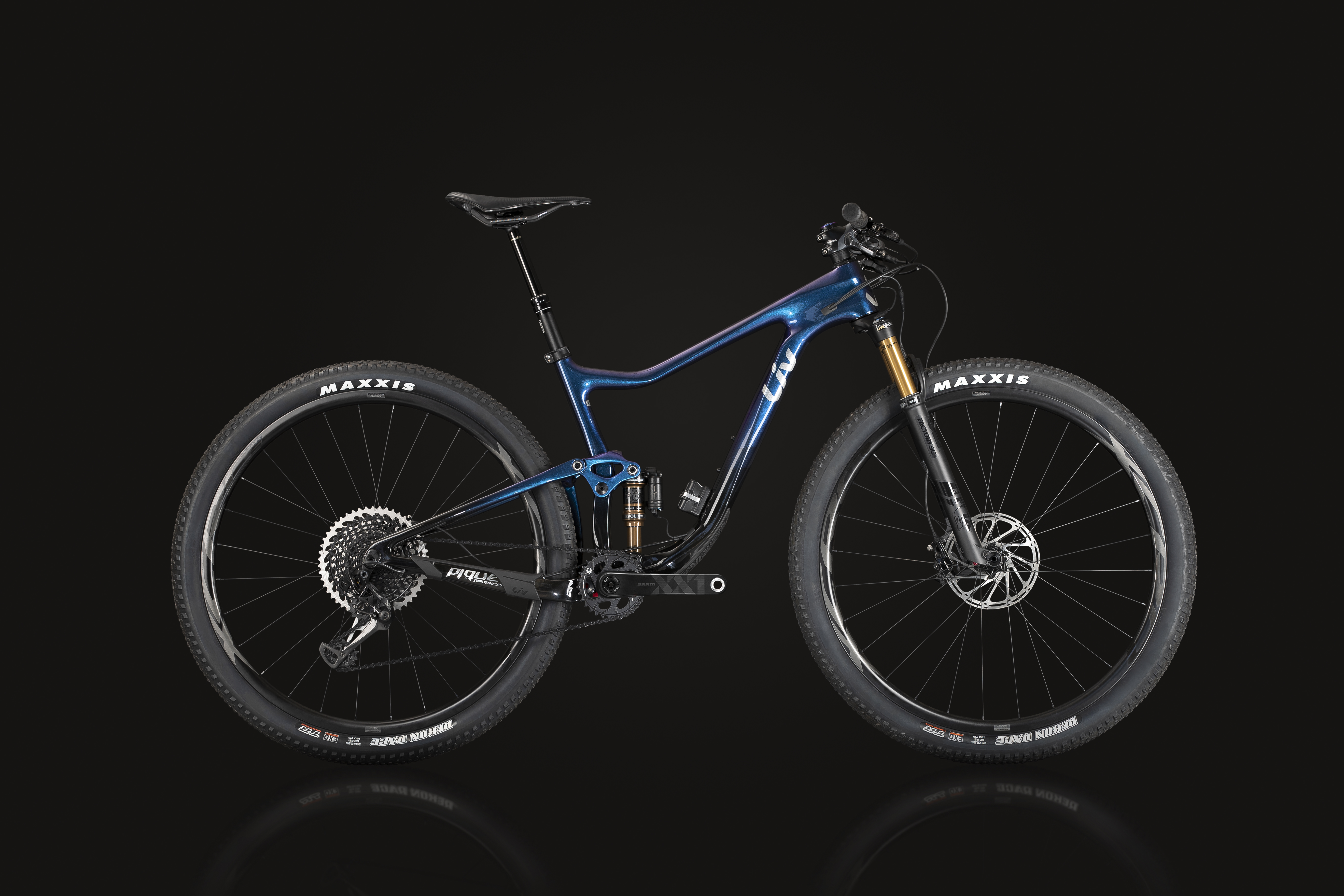
Liv may have cracked the code on how to sell a women-specific mountain bike. While some other brands fuss about paint color and handlebar length (both important!), Liv was taking measurements on how women ride bikes: The average ranges of our body dimensions (inseam versus torso length, for instance), where our power comes from, how our pedal strokes typically look, our body language, how all that changes depending on how tall we are and what kind of riding we do, and more. They call it their 3F design philosophy, and I go into more detail in the review linked above, if you’re interested in the specifics. There are lots of debates about whether or not these studies are valuable or just a gimmick. Most things in this world are designed for an average man’s body, but half the population will tell you that’s not a default body-geometry setting, and if this bike is comfortable for you, then ride it, and if not then don’t. I’m not a Kool-Aid drinker (I mean I am, but only in the literal sense), and I do acknowledge that not every woman’s body is the same just like not every man’s body is the same. But for me, these bikes fit really well and are easy to ride. And their marketing is largely through word-of-mouth and community outreach programs like the Liv Ambassadors, and that’s gotta tell you something. That they have gotten more ladybutts on bikes may also be a hint that what they’re doing is resonating with riders who didn’t feel comfortable or adequate on a bike that wasn’t designed for them. Or heck, maybe not. This is just about the Pique 29, which I got to ride a couple weeks ago at Kingdom Trails in Vermont.

The Pique 29 XC bike is a different geometry and build than the previous Pique 27.5. The Pique Advanced Pro 29 is Liv’s first full-carbon mountain bike (the other Pique 29 models outside the Advanced Pro lineup are aluminum), which sets it apart from all their other bikes from the start. While 2019 is a bit late to be launching their first full-carbon off-road bikes (The Intrigue Advanced 1 I reviewed this winter/spring had an aluminum rear triangle), Liv says this is the right time to do it because the cost of carbon has come down and carbon technology is stronger than ever. These bikes are still about as spendy as they are sendy (at least the Advanced Pro 0 model), but that is largely due to the mind-bending Fox Live Valve suspension that comes on the Pique 29 Advanced Pro 0.
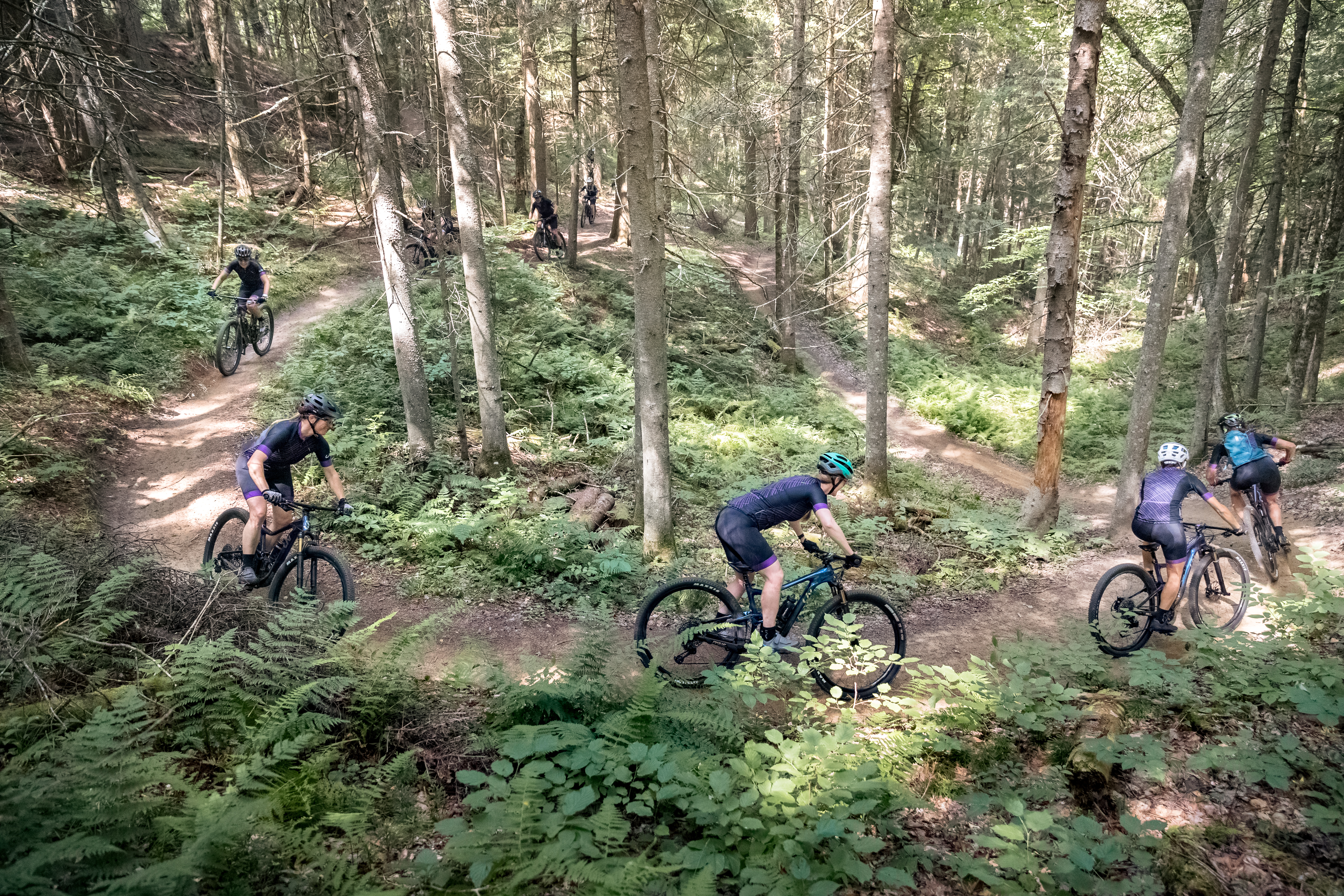
The Fox Live Valve suspension took me a bit to wrap my head around, to be honest. On the first day of riding, I was still trying to play with it depending on which trails we were riding, even though everyone was telling me, no, this is a “set it and forget it” system, you don’t need to keep adjusting it. There are five settings, which are accessed with a little button on the battery. These work more like how you are feeling about your ride, how aggressive you are feeling. They adjust the rebound speed; however, every time you hit a bump, that rebound restarts. So your bike can feel relatively stiffer and zippier, or have a bit more cush, but your ride won’t really “suffer” when the terrain changes due to hitting a gravel road, an exceptionally rooty section, or even some jumps. Additionally, the Fox Live Valve system can tell when the bike is pointed up (ascending), down (descending) or flat (traversing), and adjusts the suspension accordingly. It can also tell when it’s air-born from jumping or free-falling. There are sensors on the front and rear wheels that read signals at 1000 samples per second (Hz), and that data is collected into an algorithm to determine optimal suspension settings. They give vertical wheel movement (single-axis accelerometers) and read acceleration coming from bumps. Basically, it’s like having someone constantly adjusting your front and rear suspension for you, opening or stiffening travel constantly throughout your ride; like, 1000-times-per-second constantly.
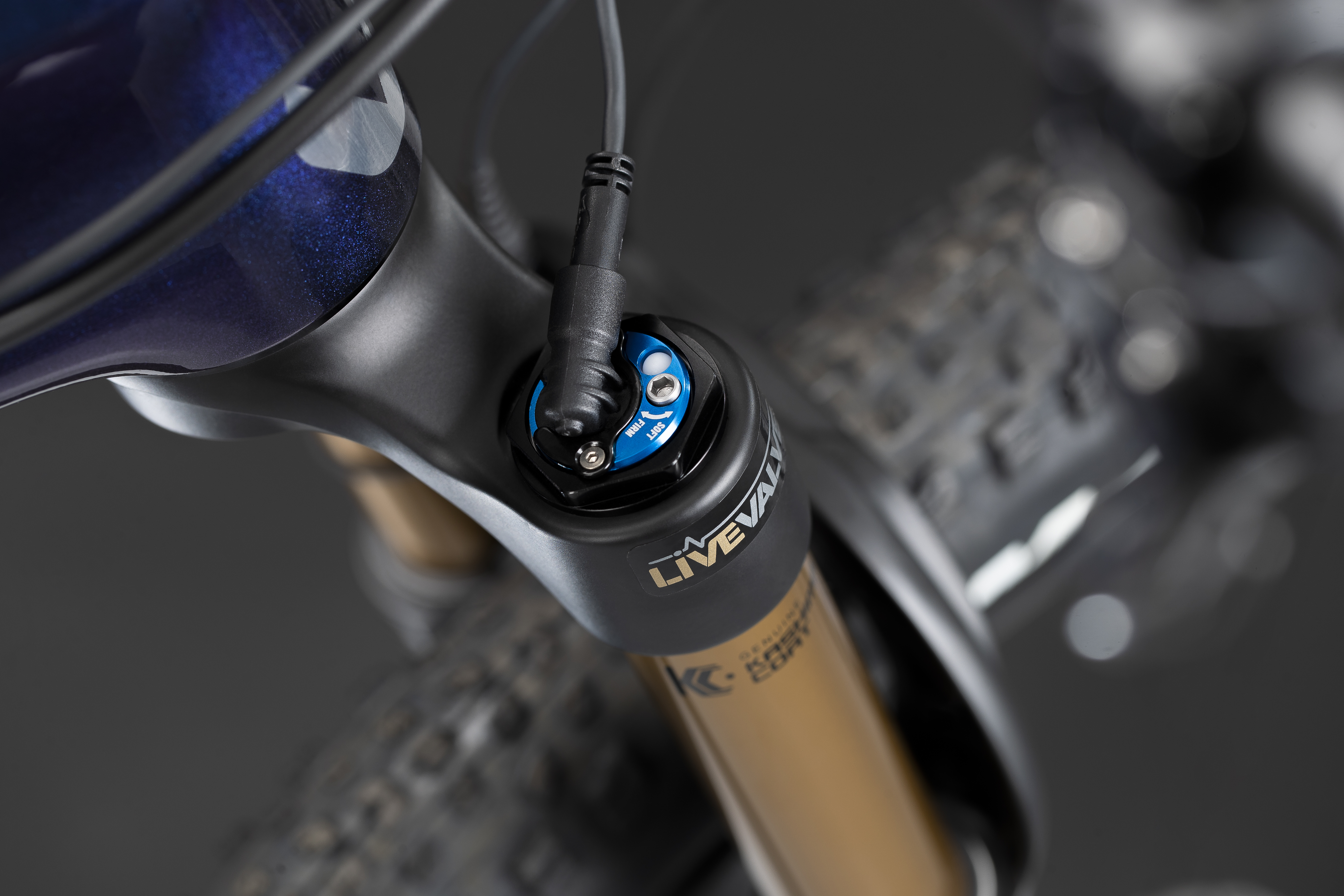
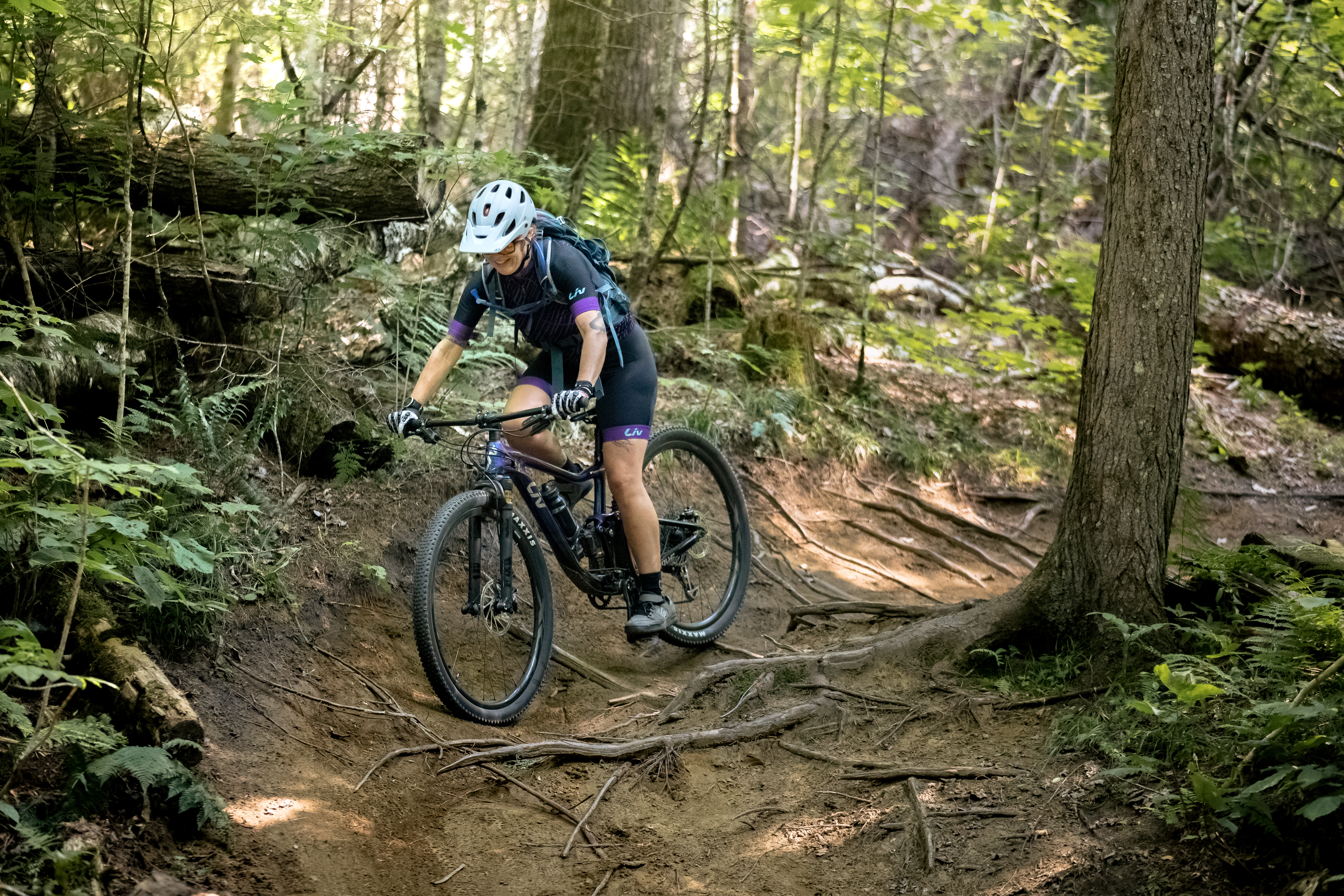
I noticed this system working best when I was climbing up a switchback and got my front wheel around a rooty section and my rear wheel rolled over it smoothly, as well as the few times I got a bit of air on whoop-dees and even a rock jump and landed buttery smooth, which isn’t my typical style. Between the Live Valve, the light frame, and the geometry, there were times I swore I was on an e-bike. I often “joke” that I’m an uphill mountain biker, not a downhill, because I tend to excel on climbs but still go pretty slow on downhill sections. Even being confident in my mountain goat legs, I was amazed at how well this bike climbed. On one section in particular, I braced myself to get bucked because my arms and legs were both tired and there was a log right after a tight, steep switchback, and the bike rolled right over it, with just a little bit of body language to coax it. That said, on the downhills I also felt more confident and it took less time than usual for me to feel comfortable riding a new bike on new trails. Whether that was the geometry, the lightweight frame that seemed to disappear under me (but not in like a scary way), or the Live Valve system that assured I was always getting the right amount of rebound, who can say. But I tried a few technical trail features on my first assessment that I would have needed to eyeball for a few weeks otherwise, and that felt great. The Kingdom Trails are super fun, the ideal type of cross country riding I like to do, with lots of roots and twisty sections, and 100 mm travel was perfect. I feel like even if we took it down the road to Burke, where the obstacles are supposedly bigger and mountains steeper, or out west where there are more rocks, this bike would have still felt great and very much able to handle whatever it was pointed at.

The Advanced Pro 29 0 model I tested comes with Sram XX1 Eagle drivetrain, with Sram Level Ultimate brakes. You may also notice that in the photos it sometimes looks purple, and sometimes looks blue. It has a rad, shimmery chameleon paint on it so it changes in different lighting. It’s a really gorgeous bike, in my opinion, but moreso they claim to use a custom lightweight paint, so maybe that is really what did it for me: it wasn’t the full carbon frame or the XX1 Eagle or the Live Valve, it was the sick paint job. Who knows? At this point, I’ll take whatever I can get.
The Advanced Pro 1 and 2 (not available in the US) come with Shimano components. In the aluminum series, the Pique 29 1 (not available in the US) and 2 both have Shimano, and the Pique 29 3 has Sram ( SX Eagle). With the Fox Live Valve system, the Advanced Pro 29 0 model is much more expensive than the others at US $12,300 but if you have that kind of cash to throw down on a cross country bike, I’d give this one some serious consideration. The Pique Advanced Pro 29 1 is a bit more moderately priced at $5,350, the Pique 29 2 is $3,000 and the 29 3 is $2,050 (all US pricing). It’s hard to say how the Pique 29 3 would ride since I tested a bike made with different materials and built up with different components, but the frame geometry was really fun for the type of trails it was built for.
